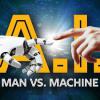
Breaking News
 Elon Tells Rogan the Real Reason Democrats are Prolonging the Government Shutdown [WATCH]
Elon Tells Rogan the Real Reason Democrats are Prolonging the Government Shutdown [WATCH]
 Newsom: Trump Is Trying to Rig the Election -- He Knows GOP Will Lose
Newsom: Trump Is Trying to Rig the Election -- He Knows GOP Will Lose
 There is zero justification for the Department of Justice's silence while the most serious...
There is zero justification for the Department of Justice's silence while the most serious...
 Gabbard Says Trump Has Ended America's Era Of 'Regime Change'
Gabbard Says Trump Has Ended America's Era Of 'Regime Change'
Top Tech News
 Graphene Dream Becomes a Reality as Miracle Material Enters Production for Better Chips, Batteries
Graphene Dream Becomes a Reality as Miracle Material Enters Production for Better Chips, Batteries
 Virtual Fencing May Allow Thousands More Cattle to Be Ranched on Land Rather Than in Barns
Virtual Fencing May Allow Thousands More Cattle to Be Ranched on Land Rather Than in Barns
 Prominent Personalities Sign Letter Seeking Ban On 'Development Of Superintelligence'
Prominent Personalities Sign Letter Seeking Ban On 'Development Of Superintelligence'
 Why 'Mirror Life' Is Causing Some Genetic Scientists To Freak Out
Why 'Mirror Life' Is Causing Some Genetic Scientists To Freak Out
 Retina e-paper promises screens 'visually indistinguishable from reality'
Retina e-paper promises screens 'visually indistinguishable from reality'
 Scientists baffled as interstellar visitor appears to reverse thrust before vanishing behind the sun
Scientists baffled as interstellar visitor appears to reverse thrust before vanishing behind the sun
 Future of Satellite of Direct to Cellphone
Future of Satellite of Direct to Cellphone
 Amazon goes nuclear with new modular reactor plant
Amazon goes nuclear with new modular reactor plant
 China Is Making 800-Mile EV Batteries. Here's Why America Can't Have Them
China Is Making 800-Mile EV Batteries. Here's Why America Can't Have Them
The Battery That Will Finally Unlock Massless Energy Storage

In groundbreaking research, scientists have made a structural battery 10 times better than in any previous experiment.
What's a structural battery, and why is it such a big deal? The term refers to an energy storage device that can also bear weight as part of a structure—like if the studs in your home were all batteries, or if an electric fence also held up a wall.
In the paper, researchers from Chalmers University of Technology and KTH Royal Institute of Technology in Sweden reveal how their "massless" structural battery works.
The main use case is for electric cars, where a literally massive amount of batteries take up a ton of room and don't contribute to the actual structure of the car. In fact, these cars must be specially designed to carry the mass of the batteries.
But what if the frame of the car could hold energy? "Due to their multifunctionality, structural battery composites are often referred to as 'massless energy storage' and have the potential to revolutionize the future design of electric vehicles and devices," the researchers explain.
To make the structural battery, the scientists layered a buffer glass "fabric" between a positive and negative electrode, then packed it with a space-age polymer electrolyte and cured it in the oven. What results is a tough, flat battery cell that conducts well and holds up to tensile tests in all directions.
The battery's combined qualities (or "multifunctionality") make it 10 times better than any previous massless battery—a project scientists have worked on since 2007.
Chalmers University of Technology writes in a press release:
"The battery has an energy density of 24 Wh/kg, meaning approximately 20 percent capacity compared to comparable lithium-ion batteries currently available. But since the weight of the vehicles can be greatly reduced, less energy will be required to drive an electric car, for example, and lower energy density also results in increased safety. And with a stiffness of 25 GPa, the structural battery can really compete with many other commonly used construction materials."

 China Innovates: Transforming Sand into Paper
China Innovates: Transforming Sand into Paper

